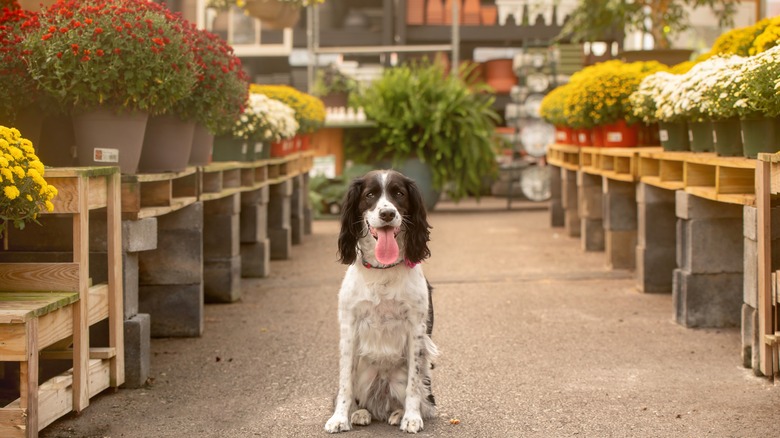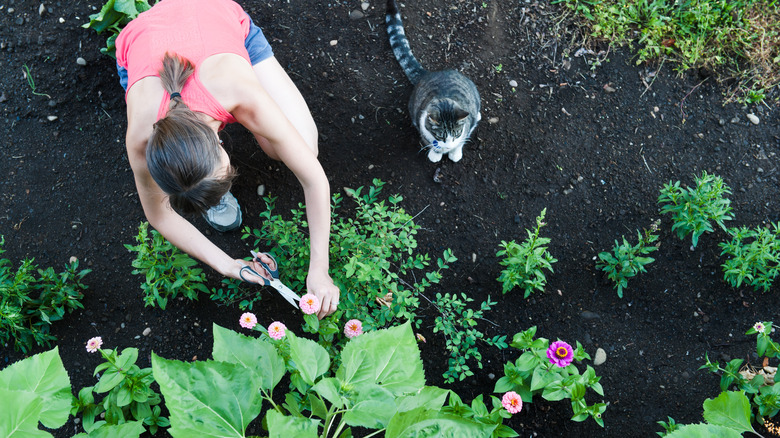The Beautiful And Popular Flower You Need To Keep Pets Away From
If you're planning to grow chrysanthemums in containers or in your garden, you'll appreciate their visual appeal and ability to repel pests. These beautiful flowers naturally contain pyrethrins and pyrethroids, chemical substances that impact the nervous system of insects. However, it's essential to be aware that these same chemicals can also negatively impact your cats, dogs, and other pets.
Dogs and cats, in particular, are susceptible to the toxic effects of mums, although they are dangerous for rabbits, horses, and other mammals, as well. The toxicity level may differ depending on the animal's size and type, how much they consumed, and their sensitivity. This makes it crucial to be careful when these flowers are in or around your residence. Fortunately, you can keep your pets safe by implementing pet-friendly habits and staying informed about the potential dangers of mums and the symptoms of exposure or ingestion to create a healthy and secure environment.
Safeguarding pets from mum poisoning
It's best to avoid using mums in indoor floral arrangements, as fallen petals or leaves can be accidentally ingested by pets. If you do choose to have mums indoors, make sure they are placed in areas inaccessible to pets, such as high shelves or hanging planters. If you have mums in your garden, consider fencing off the area to prevent pets from accessing the flowers. Training your pets to stay away from the area and supervising them when they are outside can also prevent any accidental contact with mums.
If you have some mums around, be watchful for signs of poisoning. When animals ingest these flowers, they may experience gastrointestinal discomfort, vomiting, diarrhea, and excessive salivation. Neurological symptoms such as incoordination, weakness, lethargy, tremors, and seizures could also occur, per the National Pesticide Information Center. Additionally, some animals may experience skin irritation, like redness, itching, or rashes. Seeking veterinary attention immediately can reduce the potential harm.
Cultivating a pet-friendly oasis
You have the ability to create a beautiful and safe environment for your furry friends and brighten your home using houseplants that are safe for pets. Enhance the beauty of your outdoor space by planting flowers such as daisies, sunflowers, and snapdragons that provide color and a safe haven for your pets to enjoy.
If you want to keep your pets away from potentially dangerous plants, there are some natural methods you can use as a deterrent, like orange peels or diluted vinegar. It's also good to create designated play areas and paths for your pets that are safe for them to explore. Of course, it's crucial to supervise your animals, especially when you introduce new plants to your garden or home. With patience and training, you can teach your animals to avoid certain areas or plants, ensuring their safety while still allowing them to enjoy the outdoors.

